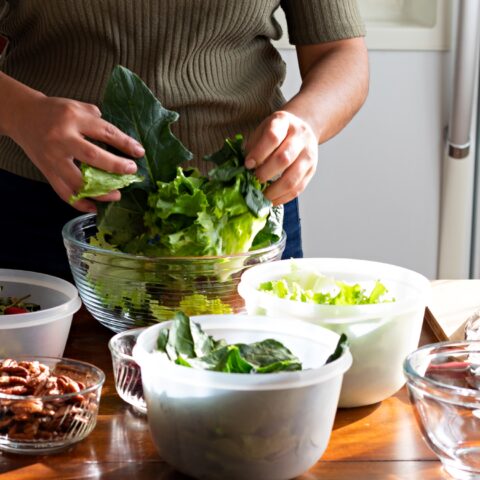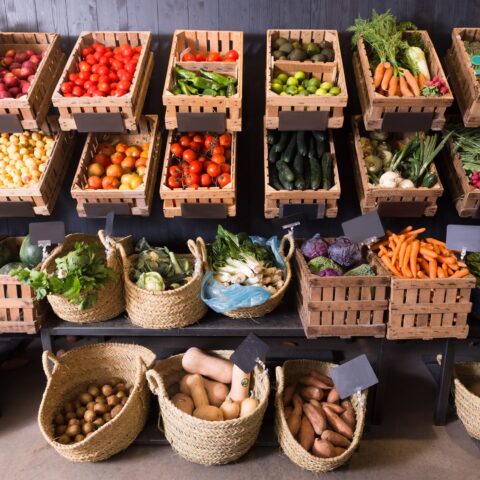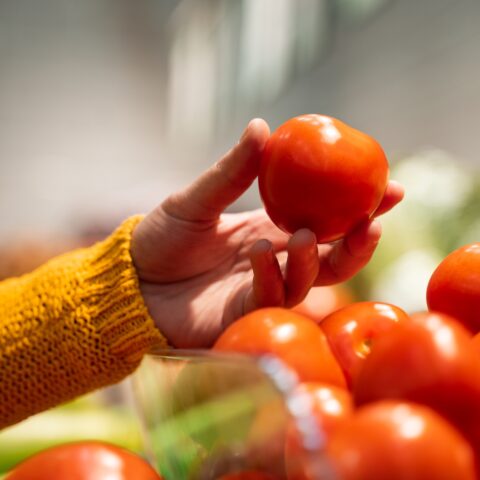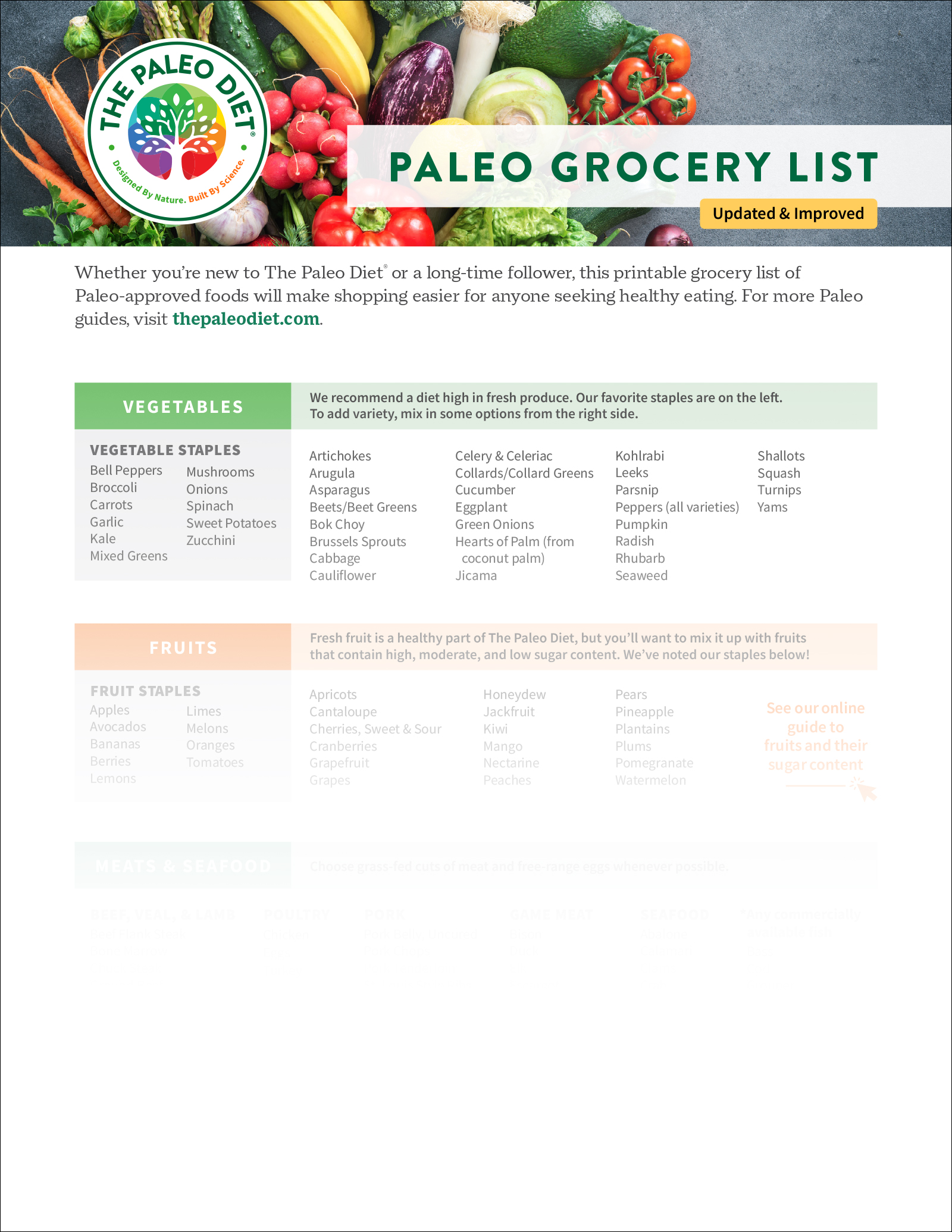Inside the Economics of Food Pricing
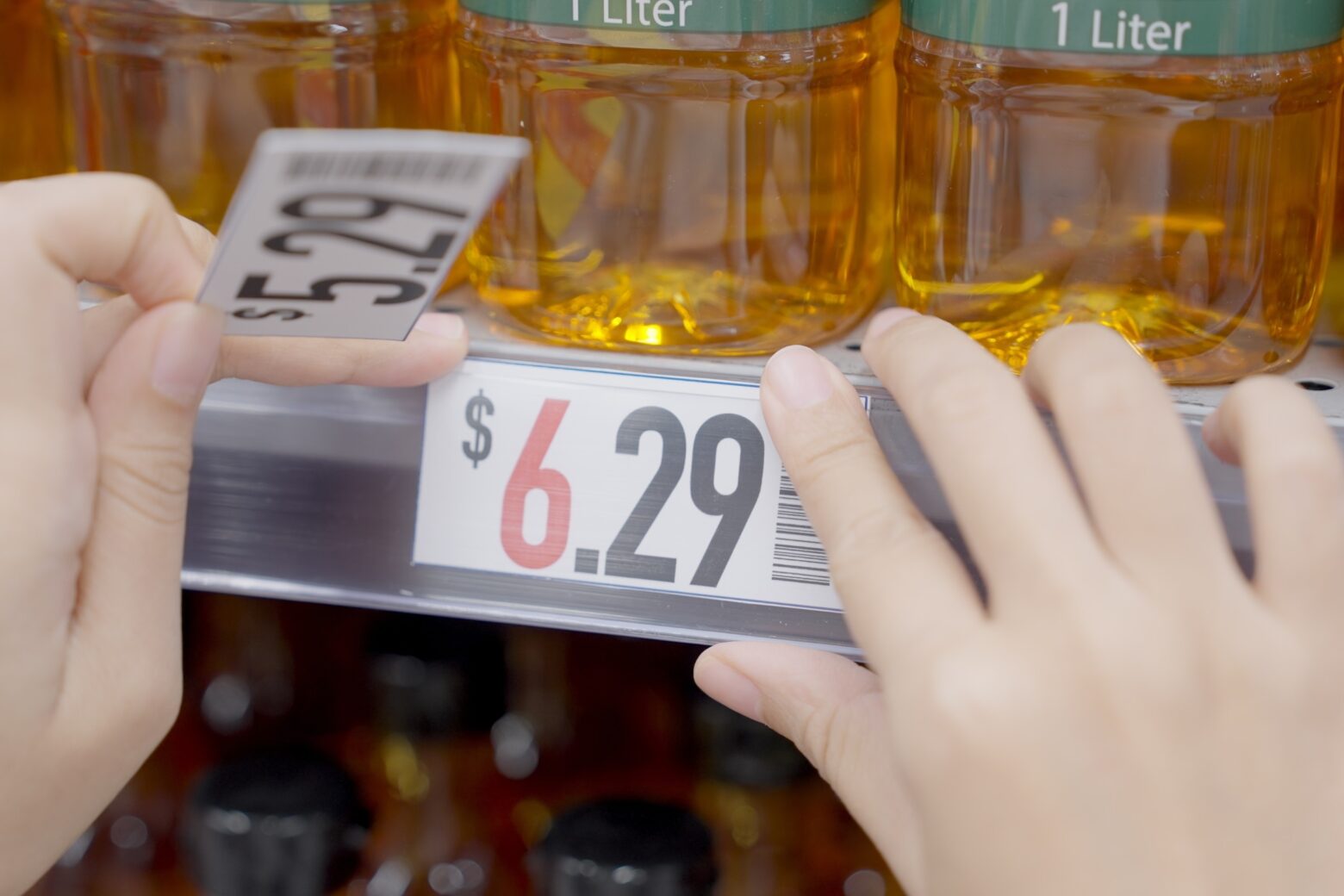
From 2020 to 2024, the price of food rose an average of 23.6%.1 Though some increases have accelerated in 2025 in several notable categories (including eggs, beef, and sugar), others have slowed compared to historical averages (poultry, fresh fruits, and cereal/bakery products).2 Consumers are often disgruntled by these seemingly opaque food pricing fluctuations, which in turn can influence purchasing behavior and dietary habits.
The effect of variable food pricing is apparent and rampant: increasing food costs are a greater concern to Americans than salaries, cost of housing, and credit card debt.3 Because of this, we’re breaking down the numerous factors that impact the price of the foods you buy and offer insight and strategies to make for more efficacious shopping.
Food Price Variability on the Shelves
There are many unseen factors that influence how retailers set grocery prices, even before items ever appear on shelves. Droughts, blights, and natural disasters can cause scarcity in one food item that leads to increased prices in a variety of shelf products. Imports of fresh fruits and vegetables have increased steadily for the past 40 years,4 which means that more and more produce items in the U.S. are subject to international trade policy and transportation costs.
The impact on processed goods can be particularly large because of the number of ingredients they often contain. Their prices fluctuate with numerous factors, including the cost of raw materials, the efficiency of the production line, and supply chain issues. A 2024 review of food supply chain disruptions explains that such issues are difficult to predict because they can occur anywhere on the level of “production, distribution, or consumption”, and they can happen on a ranging time scale. 5
During the COVID-19 pandemic, shifting consumer habits put a significant strain on the supply chain. For example, distribution systems weren’t ready for the dramatic increase in demand for disinfectant and staple paper products across all retailers.
As explained in a Federal Trade Commission (FTC) report,6 retailers such as Walmart and Amazon pressured suppliers to preferentially allocate scarce products to them, which may have led to shortages in smaller markets. In response, some purchasers diversified their suppliers (and therefore offerings) to ensure products were reliably kept in stock. These and other strategic shifts by retailers led to a consistent rise in profits throughout the pandemic according to census data, while food costs increased.
More recently, a 2025 cyberattack on grocery supplier United Natural Foods (UNFI) caused major disruptions in the supply chain.7 Challenged with keeping products on the shelves, retailers turned to new suppliers to fill timely orders and changed their offerings to satisfy customers. UNFI’s largest retailer, Whole Foods, saw numerous customer complaints about the lack of products on shelves. Ultimately, both UNFI and Whole Foods saw dips in their stock price following the attack.8
The Rise of Large Grocery Retailers
A major inciting event affecting food pricing was when the Reagan administration stopped enforcing a decades-long law outlawing price discrimination among suppliers—who were subsequently strongarmed into selling their products to larger retailers at lower prices.
The Atlantic details how this retail competition where many small retailers couldn’t survive gave way to “food deserts,” or geographical areas where a variety of foods are either difficult to acquire or priced inaccessibly.9 Many individuals who once relied on a variety of businesses for their groceries now either can’t get the foods they want locally or have to travel farther to a single grocery chain, which is not incentivized to compete against other retailers with lower prices.
What’s worse, several big retailers have been accused of using app data and AI algorithms to create “personalized pricing” for individual consumers, which is influenced by factors such as perceived income and likelihood of the customer returning.10,11 Consumers in food deserts have little choice but to continue shopping at such stores because they can no longer go to another retailer who does not artificially inflate prices.
Finally, local markets—like farmers markets—are often perceived to provide higher quality, yet overall more expensive foods. A study of famers markets and supermarkets in California did show that conventionally grown produce was more expensive at farmers markets, as well as more limited in variety.12 However, they also found that organic produce from a farmers market could be similarly priced or even cheaper than at a supermarket. But these patterns are not entirely universal and depend on the region.13
The Value of Food Waste and Food Yield
Yield is the amount of consumable food leftover after any kind of food preparation. Typically, this involves the removal of undesirable or inedible parts of the food or cooking the food, resulting in a net loss. Sometimes though, the yield can actually be higher when the proportion of consumable food increases after preparation. For example, boiling some foods increases their weight. Percent yield is also an important consideration for foods that are available to the consumer in different forms, including frozen, dried, or canned.
Though not often considered by the lay-consumer, food yield is huge factor in how restaurants determine the cost of their menu items. Food waste generated through preparation can vary due to the nature of the product (e.g., fat in different cuts of meat or size of fish), but it always has a cost which is passed down to the customer.14
The U.S. Department of Agriculture’s Agricultural Handbook No.102 lists numerous foods and their percent yield after different methods of preparation, determined from studies and lab work conducted by government and private agencies from the 1950s to 1974.15 Consumers can use this tool to determine the amount of money they are spending on the edible portion of their prepared foods and compare food pricing between fresh, canned, frozen, or dried alternatives.
RELATED: How to Analyze Your Grocery Receipt to Improve Shopping Habits
The graph below depicts data from the Agricultural Handbook for select produce items. The average retail pack of spinach, for example, loses 8% of its volume due to trimming and removal of damaged leaves. Therefore, a 16-ounce pack of organic spinach sold for $5.99 yields 14.72 ounces, or $5.51, of edible greens.
| FOOD | VARIETY | PREPARATION METHOD | PERCENT YIELD |
| Apple | All varieties, raw | Cut | 78% |
| Avocado | California Hass, raw | Cut | 68% |
| Banana | All sizes, optimum ripeness, raw | Peeled and cut | 65% |
| All sizes, overripe, raw | Peeled and cut | 60% | |
| Beef | Patties, frozen | Grilled | 62% |
| Broccoli | Trimmed, raw | Steamed | 95% |
| Carrots | Whole with tops, raw | Cut | 59% |
| Canned | N/A (prepackaged) | 66% | |
| Chicken | Breast | Roasted | 30% |
| Legs | Roasted | 24% | |
| Wings | Roasted | 15% | |
| Salmon | Steak | Baked | 85% |
| Spinach | Trimmed, raw (good quality) | N/A (prepackaged) | 100% |
| Trimmed, raw (fair quality) | N/A (prepackaged) | 92% | |
| Trimmed | Boiled | 77% |
Percent yield is an important factor for environmental- and budget-conscious individuals who want to make informed decisions about the food they buy. Fruits and vegetables are available to the consumer in different forms—from frozen or processed to whole and raw—with nutritional tradeoffs and differing price points.
By considering percent yield, a consumer can reduce food waste and save money on groceries at the same time. Thinking about percent yield can also inspire new ways to use food scraps, like for compost, juices, and broths.
Food Pricing Tips & Tools for Consumers
As consumers become more aware of the true cost of what ends up on their plate, they’re also becoming more strategic. In response to rising food costs, many households are changing how they shop, where they shop, and what they eat. These adaptive strategies are not only financially smart, but often more sustainable and health conscious as well.
Digital Tools for Smarter Shopping
A growing number of consumers are turning to digital grocery tools (apps like Flipp, Basket, or even store websites) to compare prices before leaving home. These can be helpful in finding deals and creating cost-effective shopping lists.
According to the International Journal of Scientific Research and Management (IJSRM), digital platforms are helping consumers navigate increasingly volatile food pricing, especially when managing tight budgets across multiple retailers.16 For time-stressed professionals or busy parents juggling multiple store trips, these tools can significantly reduce effort while increasing savings.
Discount Stores and Private-Label Brands
One of the most effective strategies for stretching a food budget is shopping at discount retailers like Aldi, Lidl, or Walmart. As the IJSRM notes, many consumers are also switching to private-label store brands for staples like greens, potatoes, onions, and apples, which offer comparable quality at a lower price point.16
For families managing weekly grocery lists, or for athletes meal prepping in bulk, the combination of discount pricing and private-label efficiency delivers both cost and calorie value.
Farmers Markets and Local Food Sources
While farmers markets have a reputation for being pricey, the reality can be quite different—especially when buying seasonal produce or shopping smart. In many areas, shopping directly from farmers can reduce transportation and middleman costs, meaning fresher food at competitive prices.
To find significant savings, we suggest buying near closing time, choosing discounted “imperfect” produce, or purchasing in bulk. Health-conscious eaters looking to buy fresh, nutrient-dense foods while supporting local agriculture can also look into local food co-ops and CSA (community-supported agriculture) shares. These programs offer affordable and regular access to produce with the added benefit of transparency around sourcing.
Frozen produce, often flash frozen at peak ripeness, can also be a smart and Paleo-friendly choice. It’s more affordable than fresh in some cases, has a longer shelf life, and reduces waste—all helpful for meal prepping or cooking for one.
RELATED: How to Freeze Meat, Fish, and Produce
An Approachable Strategy for Tackling Increases in Food Pricing
For consumers following a Paleo lifestyle, rising food prices don’t have to mean sacrificing nutritional quality. Whole foods like root vegetables (sweet potatoes, carrots, parsnips), frozen or fresh seasonal greens, and pasture-raised eggs are often more affordable per portion than prepackaged “healthy” alternatives. You can often find these products at many grocery stores and farmers markets or use digital tools to discover the best price in your area.
In terms of strategy, shoppers can plan meals around what’s in season, buy produce in bulk to freeze or batch cook, and focus on simple meals that deliver nourishment without processed shortcuts. By rethinking convenience and getting creative with staple ingredients, Paleo consumers can maintain their dietary values while still making smart financial choices.
Together, these strategies represent more than just cost cutting. They signal a broader evolution in consumer behavior: one that values nutrition, yield, sustainability, and digital literacy just as much as sticker price. Whether it’s a budget-conscious parent feeding a family, a young student trying to keep healthy habits, or an athlete optimizing their fuel, it’s important to become empowered in food choices and know how to use the tools available to you.
References
- Davidenko, V. and Sweitzer, M. (2025). U.S. food prices rose by 23.6 percent from 2020 to 2024. USDA Economic Research Service. https://www.ers.usda.gov/data-products/chart-gallery/chart-detail?chartId=58350
- USDA ERS. (2025). Food Price Outlook. https://www.ers.usda.gov/data-products/food-price-outlook/summary-findings
- Roeloffs, Mary Whitfill. (2025). Almost 90% of Americans are worried about the cost of groceries. Forbes. https://www.forbes.com/sites/maryroeloffs/2025/08/04/almost-90-of-americans-are-worried-about-the-cost-of-groceries/
- Zahniser, S. (2023). Imports make up growing share of U.S. fresh fruit and vegetable supply. Economic Research Service. US Department of Agriculture. https://www.ers.usda.gov/data-products/charts-of-note/chart-detail?chartId=107008
- Rojas-Reyes, J. J., Rivera-Cadavid, L. and Peña-Orozco, D. L. (2024). Disruptions in the food supply chain: A literature review. Heliyon, 10, 14. https://doi.org/10.1016/j.heliyon.2024.e34730)
- Federal Trade Commission. (2024). Feeding America in a time of crisis: The United States grocery supply chain and the covid-19 pandemic. FTC Staff Report. https://www.ftc.gov/system/files/ftc_gov/pdf/p162318supplychainreport2024.pdf
- Silverstein, S. (2025). How the cyberattack against UNFI affected 4 independent grocers. CybersecurityDive. https://www.cybersecuritydive.com/news/unfi-cyberattack-response-supply-chain-grocery-wholesale/750961/
- Egan, M. (2025). Empty shelves plague some Whole Foods after distributor knocked offline. CNN Business. https://www.cnn.com/2025/06/10/business/whole-foods-cyber-attack-unfi)
- Mitchel, S. (2024). The great grocery squeeze. The Atlantic. https://www.theatlantic.com/ideas/archive/2024/12/food-deserts-robinson-patman/680765/
- News, P. (2025, August 3). Personalized pricing has spread across many industries. Here’s how consumers can avoid it. PBS News. https://www.pbs.org/newshour/economy/personalized-pricing-has-spread-across-many-industries-heres-how-consumers-can-avoid-it
- Huffman, M. (2024, May 3). “Personalized pricing” means the price isn’t the same for everyone. ConsumerAffairs. https://www.consumeraffairs.com/news/personalized-pricing-means-the-price-isnt-the-same-for-everyone-050324.html
- Hewawitharana, S. C., Webb, K. L., Strochlic, R., and Gosliner, W. (2022). Comparison of fruit and vegetable prices between farmers’ markets and supermarkets: Implications for fruit and vegetable incentive programs for Food Assistance Program participants. Nutrients. https://pmc.ncbi.nlm.nih.gov/articles/PMC9104456/#B49-nutrients-14-01842
- Salisbury, Karli; Curtis, Kynda; ozo, Veronica; Durward, Carrie (2018). Is local produce really more expensive? A comparison of direct market and conventional grocery produce pricing. Research in Argicultural and Applied Economics. https://ageconsearch.umn.edu/record/274599/?v=pdf
- The BC Cook Articulation Committee. 2015. Yield testing. Basic Kitchen and Food Service Management. https://opentextbc.ca/basickitchenandfoodservicemanagement/
- U.S. Department of Agriculture. (1975). Food yields summarized by different ages of preparation. Agriculture Handbook No. 102. https://www.ars.usda.gov/ARSUserFiles/80400530/pdf/ah102.pdf
- IJSRM. (2023). Grocery Pricing Trends. https://ijsrm.net/index.php/ijsrm/article/view/5374/3315

